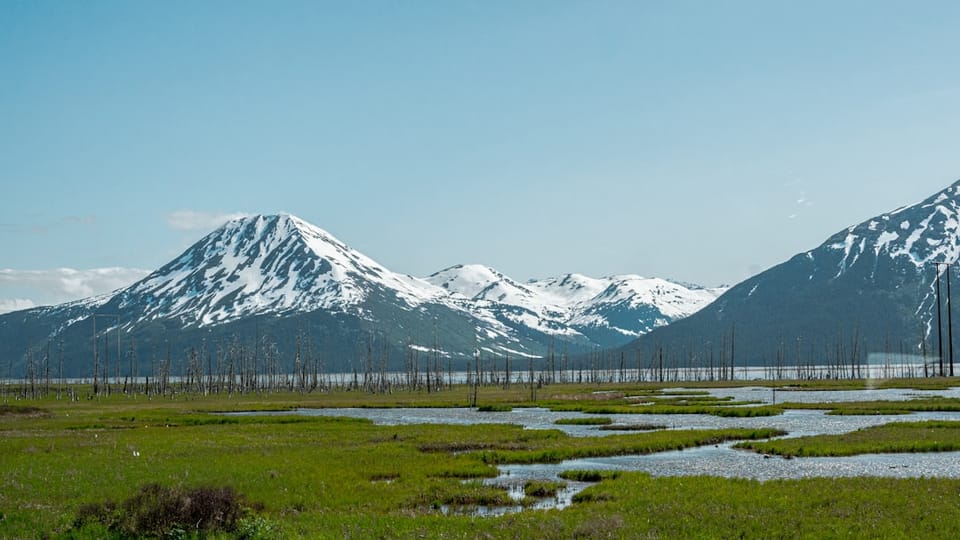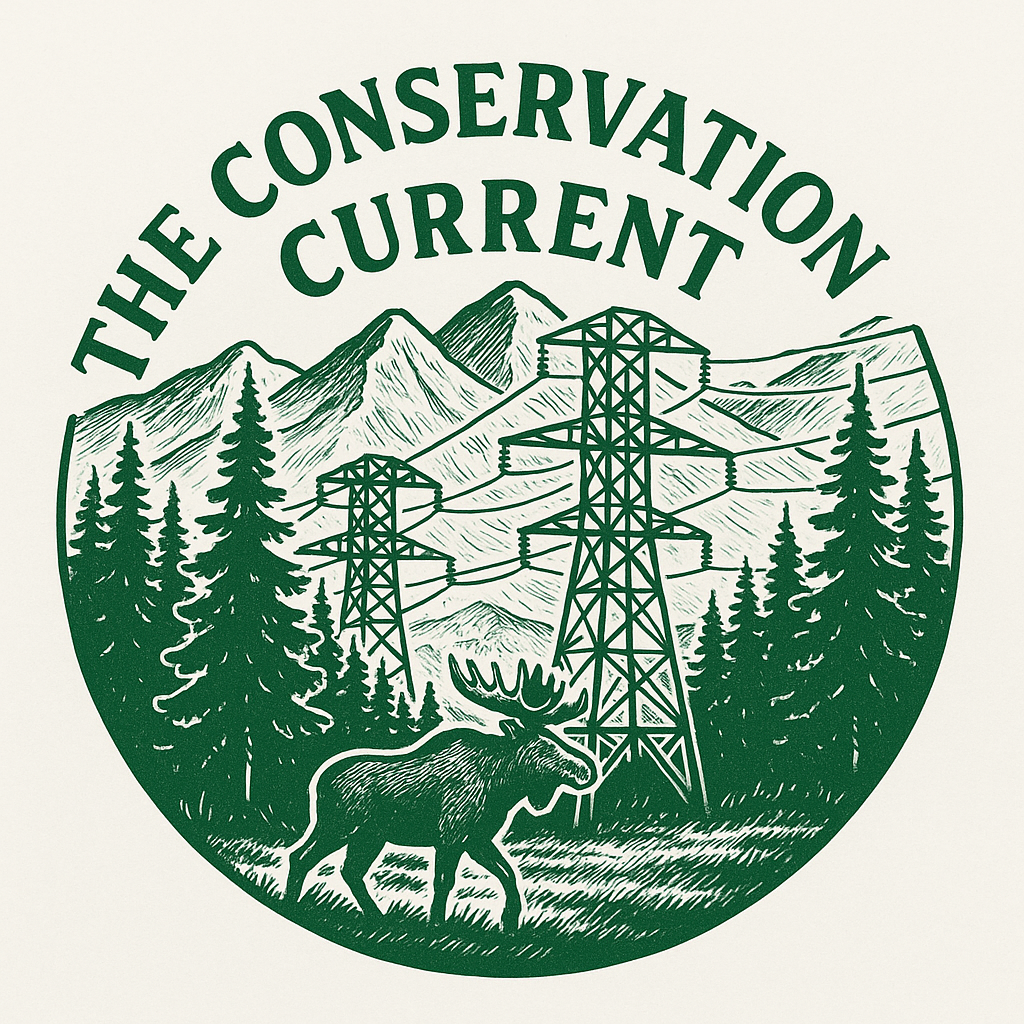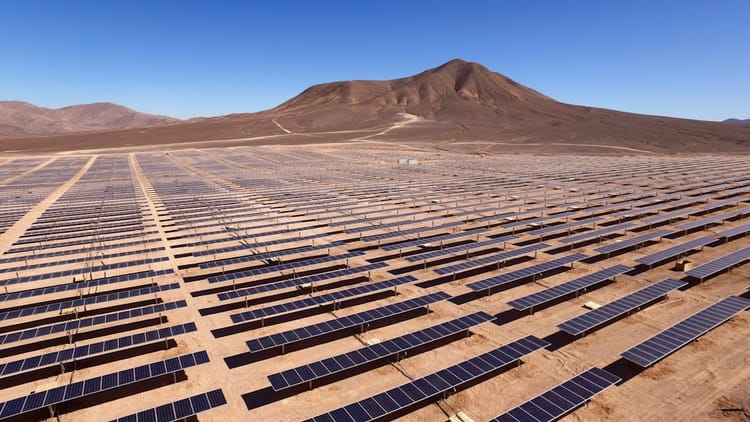The Big Beautiful Land Grab: Short-Term Energy, Long-Term Consequences

The Big Beautiful Bill Act is now law, and at 940 pages, it raises plenty of questions about what’s inside. I’ve pulled out the key provisions and summarized how they shape conservation and the energy industry into 5 themes.
At its core, the bill accelerates fossil fuel leasing, weakens the resiliency of our forests, and slashes support for conservation and clean energy programs. It pushes public lands further toward extraction of oil, gas, minerals, coal, and timber, while stripping away the environmental guardrails that once kept use and protection in balance.
Theme: Supercharged Fossil Leasing
Subtitle A – Oil & Gas Leasing (Secs. 50101–50105 of the Big Beautiful Bill)
What it does:
Cuts royalty rates for oil and gas drilling, both onshore and offshore.
Reinstates noncompetitive leasing, making it easier for companies to scoop up land at bargain prices.
Orders the Interior Department to resume quarterly lease sales in key states (Wyoming, New Mexico, Colorado, Utah, Montana, North Dakota, Alaska) and offshore areas, including the Gulf of Mexico (Texas, Louisiana, Mississippi, Alabama) and Alaska’s Cook Inlet.
Expands leasing in the Arctic National Wildlife Refuge (ANWR) and the National Petroleum Reserve-Alaska (NPR-A).
Allows commingling of production streams, muddying how royalties are tracked and reducing transparency.
Ends royalties on vented and flared methane. Effectively letting companies waste gas without penalty.
Why it matters:
This is a fossil fuel bonanza. Public lands and waters become the backbone of a renewed drilling surge, with conservation safeguards rolled back. Required leasing quotas cheapen land, while lower royalties mean less return for taxpayers and fewer funds for restoration. ANWR, one of the last intact Arctic ecosystems, faces direct industrializationIndirect consequences:
A “race to lease” dynamic could drive speculative grabs on federal land. A speculative land grab means income is priorized above local communities and environmental concern.
Weakened methane oversight undermines climate progress, with ripple effects for air quality and public health.
By prioritizing drilling, clean energy projects on the same lands may face greater permitting delays.
Theme: Coal’s Last Stand
Subtitle B – Mining (Secs. 50201–50204)
What it does:
Fast tracks pending coal lease approvals within 90 days.
Lowers royalty rates through 2034.
Opens at least 4 million additional acres of federal land for coal leasing.
Expands access to adjacent reserves if a mining plan already exists.
Why it matters:
Just as the market is turning away from coal, this bill throws it a lifeline, at the expense of public lands. It keeps extraction alive in regions already battered by decades of strip mining.Indirect consequences:
Extends the economic life of coal, delaying transition to clean energy.
Increased land disturbance undermines restoration goals, especially in fragile ecosystems like the Powder River Basin.
Taxpayer subsidies (via low royalties) lock in liabilities for cleanup when companies inevitably walk away.

Theme: Logging Up, Conservation Down
Subtitle C – Lands (Secs. 50301–50305)
What it does:
Mandates steadily increase timber sales on Forest Service and BLM lands through 2034, with long-term contracts ensuring industrial logging.
Establishes fees and revenue-sharing for wind and solar projects on public lands.
Rescinds significant funding for BLM and NPS conservation, habitat restoration, and hiring.
Redirects $150 million to the NPS for America’s 250th anniversary celebrations, not stewardship.
Why it matters:
Logging quotas risk turning forests into carbon sources instead of carbon sinks. Renewable energy leasing frameworks provide structure, but conservation budgets are gutted—leaving fewer tools to offset ecological damage.Indirect consequences:
Public distrust of renewables is framed as extractive rather than restorative.
Timber mandates ignore wildfire risks and climate resilience needs.
Symbolic funding (celebrations) replaces functional stewardship, undercutting the mission of public lands.
Theme: Fossil Fuel Priorities, Clean Energy Rollbacks
Subtitle D – Energy (Secs. 50401–50404)
What it does:
Infuses $389M into the Strategic Petroleum Reserve.
It rescinds the Inflation Reduction Act (IRA) clean energy funds, including home efficiency, Tribal energy, and advanced vehicle manufacturing programs.
Expands loan eligibility for fossil fuel infrastructure—removing requirements for pollution controls.
Adds $1B for fossil-linked grid reliability projects.
Funds AI/microelectronics research, with limited direct clean energy tie ins.
Why it matters:
The bill systematically pulls back support for clean energy and doubles down on fossil fuel infrastructure. Communities counting on IRA programs for efficiency upgrades or cleaner transportation lose momentum.Indirect consequences:
Slows domestic EV and clean tech growth, ceding ground to foreign manufacturers.
Grid reliability funds may entrench natural gas instead of accelerating storage or demand management.
AI/data investments could benefit energy efficiency indirectly, but risk prioritizing defense/industry over climate. Hopefully, nuclear (a clean but not renewable energy) can increase with this funding.
Theme: The Great Rollback
Title VI – EPA & Environmental Programs (Secs. 60001–60026)
What it does:
Rescinds vast swaths of IRA funding for zero-emission school buses, GHG monitoring, methane reduction, disadvantaged community grants, air quality sensors, building decarbonization, and climate justice programs.
Delays methane fees until 2034.
Weakens NEPA by allowing project sponsors to pay to expedite reviews.
Redirects hundreds of millions to unrelated cultural infrastructure (e.g., Kennedy Center).
Why it matters:
This is a full-scale dismantling of climate progress. Communities most vulnerable to pollution lose dedicated funding. NEPA’s integrity is weakened, making it harder for the public to weigh in on projects impacting land and health.Indirect consequences:
Shifts environmental review toward a “pay-to-play” model, privileging well-funded developers.
Loss of monitoring data undercuts future policy enforcement.
Disadvantaged communities bear disproportionate costs as protections vanish.
Natural Gas Flare - Photo by Matin Tavazoei on Unsplash
The Bottom Line
The Big Beautiful Bill prioritizes short-term energy extraction over long-term land stewardship. Oil, gas, and coal get more access to exploit public lands, and conservation and clean energy programs are gutted. This locks in an outdated energy infrastructure, eroding trust in public land management and deepening inequities for frontline communities and people trying to recreate on public lands.
The Big Beautiful Bill was pitched as securing America’s energy future. While it may do this, it does with the wrong short term intentions. America should be planning for an energy future that sets up success for generations, not the next ten years.
Most countries are looking for energy security by diversifying their energy portfolio while looking for a cleaner future.
Silver Lining:
- Fossil fuels do create short term security
- There could be a surge in nuclear innovation and funding
- More potential leases for geothermal (a relatively clean energy)
The Cloud:
- Coal is a dying industry & financially more costly. Coal mining is devastating to biodiversity. It’s moving energy in the wrong direction.
- Fossil Fuels are not clean to extract
- Stifles innovation on renewables
- More public lands are opening up for extraction
- We will potentially fall further behind to other large countries






